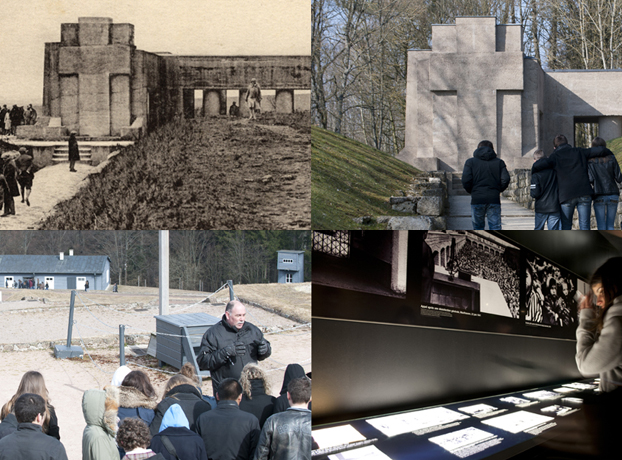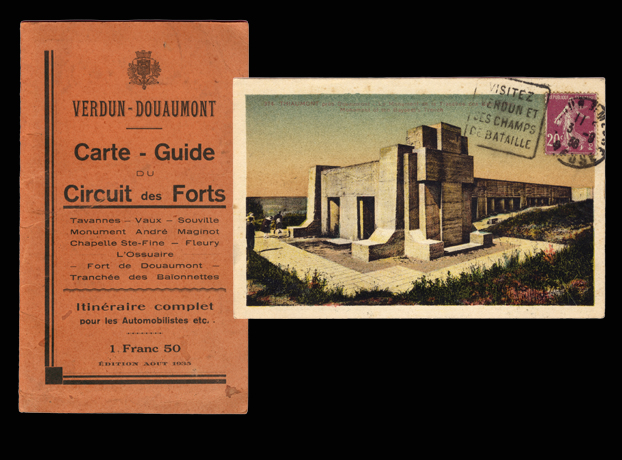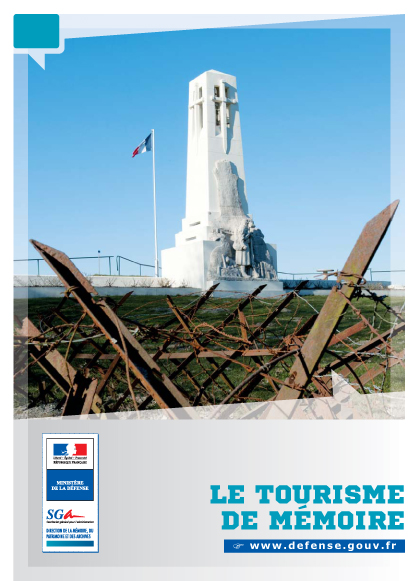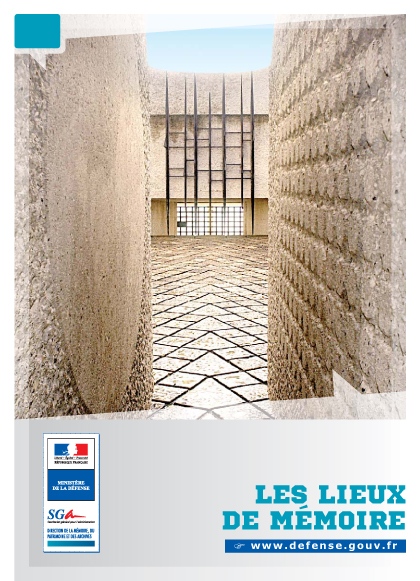From past battles and especially the conflicts waged in two world wars, France today is home to a rich and diverse heritage that is unrivalled worldwide. Battlefields, the ruins of defence structures, commemorative monuments, military cemeteries and museums are so many sites to which a visit is an act of honouring the memory of the men and women who were killed during these conflicts and understanding the events which forged a national and world history.
At the helm of this important memorial heritage, the French Ministry of Defence is today one of the key stakeholders of remembrance tourism in France. Working in conjunction with other ministries, France's Ministry of Defence is the contact and partner of a number of external parties, such as local authorities, memorial trusts and the representatives of foreign governments, in charge of managing the remembrance tourism policy in France. A division of the French Ministry of Defence, the Directorate of Memory, Heritage and Archives (DMPA) is responsible for directing the ministry's role as both stakeholder and leader of its remembrance tourism policy.
Well-established but still poorly organised, remembrance tourism is currently undergoing a remarkable revival, as shown by the renewed interest in the subject by local authorities and the action taken by some foreign governments.
From battlefield pilgrimage to remembrance tourism
Since 1917, the Michelin company has published guides to battlefields aimed at the families of soldiers. Even before the battles had ceased, these sites became destinations visited by families and the public. Following the notion of individual, private and family pilgrimage, remembrance tourism is a broader phenomenon which combines an individual and collective dimension as the determining factors of visits to these sites.
Today, the State is seeing a renewed energy among local and regional authorities which recognise the potential economic and cultural growth to be leveraged from remembrance tourism.
This is the spirit in which local authorities are undertaking and supporting ambitious memorial projects, often through public works that shed light on significant chapters of our local and national history. The State also has a duty to address the renewed interest of foreign governments who wish to keep alive, on behalf of their people, the memory of their nationals who died on the fields of honour in our land.
Remembrance tourism is therefore situated at the crossroads of several ambitions held by numerous stakeholders: a civic and educational ambition which consists of sharing a common history with the largest number and transmitting remembrance for contemporary conflicts to the French population; a cultural and heritage ambition which consists of guaranteeing the protection of places of remembrance and France's civil and military heritage; finally, an economic ambition which aims to highlight the tourism dimension of this heritage in a bid to generate local wealth from the appeal of places of remembrance.
The State encourages this proaction, signing partnership agreements with the regions concerned which will ensure a coherent approach to the development of these sites.

 Voyager au cœur de l'histoire grâce à de nouveaux outils
Voyager au cœur de l'histoire grâce à de nouveaux outils




